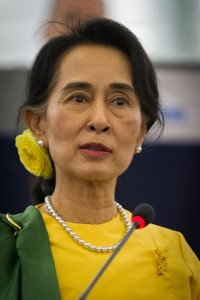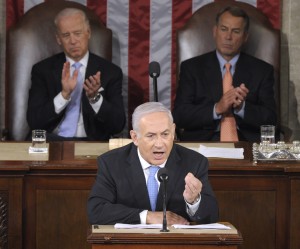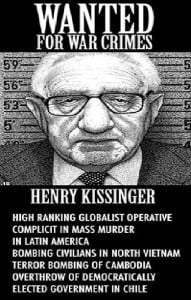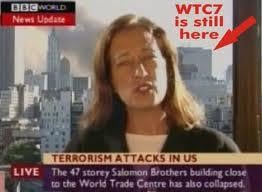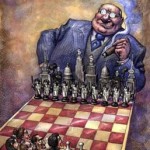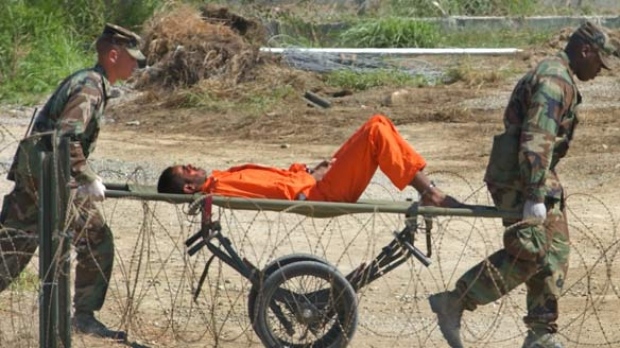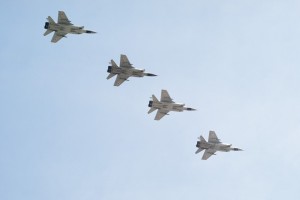Human rights violations committed by ISIS are condemned the world over – rightly so – whereas those committed by the US-led coalition fighting ISIS are under-reported, particularly in the West.
What follows is a selection of the latter – a selection that strongly suggests the coalition’s military strategy is compounding the humanitarian crisis in Iraq.
.
13 September 2010 – Amnesty International releases a report on “unlawful detention, enforced disappearance and torture or other ill-treatment of thousands of people since 2003 by the US-led Multinational Force (MNF) in Iraq and the Iraqi authorities.” The report states “US and Iraqi forces have…committed grave human rights violations”: of having “tortured or otherwise ill-treated many prisoners, some of whom have died as a result”; “killed civilians in raids on houses, at checkpoints and during armed clashes”; and “destroyed the houses and other property of Iraqis.”
21 January 2011 – Human Rights Watch releases a report stating “[a]fter 2003, militias, insurgents, Iraqi security forces [ISF], multinational forces, and foreign private military contractors raped and killed women” in Iraq. Following “the US-led invasion of 2003, the deterioration of the security situation in Iraq has promoted a rise in tribal customs and religiously-inflected political extremism, which have had a deleterious effect on women’s rights”.
The report notes “trafficking in women and girls in and out of the country for sexual exploitation is widespread”, and “[m]ilitias promoting misogynist ideologies have targeted women and girls for assassination, and intimidated them to stay out of public life.” Particularly vulnerable for abuse are the “many women who have fled sectarian or other violence, who have been widowed, or who for other reasons are…dependent on state aid”. In cases of unlawful killing, “[b]efore the women were killed, they were tortured and sometimes had their teeth or eyes extracted. The corpses had bruises all over their bodies. Some had their breasts cut off or arms amputated and their hair was shaven off. Most of the victims had terrified looks frozen on their faces.”
7 February 2012 – Evidence comes to light suggesting a British special forces unit and an Australian SAS squadron were “an ‘integral’ element of the potentially illegal detention of prisoners of war at a secret Iraqi desert prison [called H1] in 2003” and “may have been complicit in war crimes by handing detainees over to the so-called ‘black site’.” [Beginning in 2014, Britain and Australia would intervene in Iraq again by conducting airstrikes and training Iraqi forces as part of the US-led coalition fighting ISIS.]
12 September 2012 – A BBC investigation reveals law enforcement agencies in Iraq are directly involved in the systematic persecution of the gay community. In addition to the “reports of militiamen in Iraq targeting homosexuals [sic], testimonial evidence gathered by BBC World Service shows that the Iraqi police are involved in the ongoing deadly persecution of gays, which the [Iraqi] government is ignoring.” According to activists, up to “a 1000 gay men and women…have been murdered since 2004, most of them in recent years.”
11 March 2013 – Amnesty International releases a report stating that the Coalition forces, throughout their presence in Iraq until 2011, “subjected detainees to torture and other ill-treatment and were also complicit in serious violations of human rights committed by Iraqi security forces.” The report notes “[m]any detainees were transferred by Coalition forces from their custody to that of the Iraqi authorities in the knowledge that this would place such detainees at grave risk of torture or other abuses.” Amnesty International expresses concern that the mistreatment of prisoners by the Government of Iraq is likely to “continue to prevail and may even worsen”.
26 April 2013 – The International Crisis Group reports that on 23 April 2013, Iraqi security forces use force to end a demonstration in the town of Hawija in Kirkuk governorate, resulting in “over 50…killed and 110 wounded”. The incident is just one of many comprising the 2012–13 Iraqi protests, which are driven by the marginalisation of the Sunni Arab population in post-Saddam Iraq. The Government’s harsh suppression of these protests has exacerbated the sense of exclusion among a sizeable proportion of the Sunni population.
4 January 2014 – Human Rights Watch calls on Iraqi authorities to “immediately order a transparent and impartial investigation into violence between security forces and antigovernment protesters in the western city of Ramadi” that on 30 December 2013 “left 17 people dead”, and into “the apparently related killings of the brother and five bodyguards of a member of parliament, Ahmed al-Alwany, during his arrest” on 28 December 2013.
12 January 2014 – The International Criminal Court is presented with a “devastating 250-page dossier, detailing allegations of beatings, electrocution, mock executions and sexual assault [that] could result in some of Britain’s leading defence figures facing prosecution for ‘systematic’ war crimes.” The court acknowledges there is little doubt that British forces committed war crimes between 2003 and 2008.
21 January 2014 – Human Rights Watch releases its World Report 2014. In a press releasesummarising the Iraq chapter of the report, Human Rights Watch states the Iraqi “government failed to protect its citizens” in 2013, using “arrests, criminal charges, and violence to intimidate protesters and journalists who expressed opposition to the government”. Iraqi “security forces…carried out brutal counterterrorism measures” and “[m]ilitias carried out assassinations that led to the displacement of thousands of families, with no one brought to justice for their crimes.”
6 February 2014 – Human Rights Watch releases a report on the systemic abuse of women in Iraq’s criminal justice system in the aftermath of the US-led invasion of Iraq. The report accuses Iraqi security forces of conducting “random and mass arrests of women that amount to collective punishment of women for alleged terrorist activities by male family members, often their husbands.” Despite being approximately 20 per cent of the total female population of Iraq, an overwhelming majority of women held in Iraqi prisons are Sunni Arab. Reported cases of abuse include “threats of, or actual, sexual assault (sometimes in front of husbands, brothers, and children)”, burning with cigarettes, “sexual torture” which sometimes “resulted in pregnancy” or physical disability, and “beatings, electric shocks with an instrument known as ‘the donkey,’ and falaqa (when the victim is hung upside down and beaten on their feet)”.
The report points out “Iraqi law allows for children under the age of four to remain in prisons with their mothers, but women reported that there have been instances of children remaining in prisons until they are 7-years old.” A prison employee told Human Rights Watch that in one instance “a child who was incarcerated with his mother on death row remained in the prison for several weeks after she was executed.”
The report traces the origins of these practices to the “legacy of abuse inherited from Saddam Hussein’s rule”, but also notes that “[a]fter 2003, US-led Coalition Forces transferred thousands of Iraqi detainees to Iraqi custody despite knowing that they faced a clear risk of torture”, and “[i]n some cases, Coalition Forces themselves committed abuses against prisoners, including female prisoners.”
3 March 2014 – US journalist Dahr Jamail reports, “[d]octors, residents and NGO workers in Fallujah are accusing the Iraqi government of ‘war crimes’ and ‘crimes against humanity’ that have occurred as a result of its ongoing attack on the city.” According to “Dr. Ahmed Shami, the chief of resident doctors at Fallujah General Hospital, …since Iraqi government forces began shelling Fallujah in early January 2014, at least 109 civilians have been killed and 632 wounded”, including women and children.
13 May 2014 – The International Criminal Court announces it is to conduct “a preliminary examination of what have been estimated to be 60 alleged cases of unlawful killing and claims that more than 170 Iraqis were mistreated while in British military custody during the conflict” between 2003 and 2008.
27 May 2014 – Human Rights Watch reports that the “recurring strikes on the main hospital [in Fallujah], including with direct fire weapons, strongly suggest that Iraqi forces have targeted it, which would constitute a serious violation of the laws of war.” Human Rights Watch has ascertained that “[s]ince early May [2014], government forces have also dropped barrel bombs on residential neighborhoods of Fallujah and surrounding areas, part of an intensified campaign against armed opposition groups, including [ISIS]. These indiscriminate attacks have caused civilian casualties and forced thousands of residents to flee.”
11 June 2014 – Amnesty International reports Iraqi “Government forces have used indiscriminate shelling in Fallujah in the past six months, including on hospitals and in residential areas.”
27 June 2014 – Reuters reports that “in western Anbar province Iraqi troops had begun replying in kind [to ISIS’s atrocities], carrying out extra-judicial executions, torture and humiliations of their enemy and posting images of the results online” and “prisoners were being preemptively killed in Iraq to prevent militant groups from freeing them to rejoin the rebellion.”
11 July 2014 – Human Rights Watch uncovers “mass extrajudicial killings [that] may be evidence of war crimes or crimes against humanity”. Human Rights Watch claims “Iraqi security forces and militias affiliated with the government appear to have unlawfully executed at least 255 prisoners in six Iraqi cities and villages since June 9, 2014”, of whom “[a]t least eight…were boys under age 18.” The vast majority of the perpetrators are Shi’a security forces and militias, while the murdered prisoners were Sunni.
18 July 2014 – UNAMI (United Nations Assistance Mission for Iraq) releases a report that details violations against civilians committed by the Iraqi security forces and affiliated militias, including “extrajudicial killings, and at times [carrying] out military operations without due respect for the principles of proportionality, distinction and the obligation to take all necessary precautions to protect civilians from the effects of violence, which may also amount to war crimes.” According to the report, UNAMI has received credible reports of “children [aged 13 to 18] increasingly being recruited by militias from all sides, including those supported by the [Iraqi] Government.” Enlisting children under the age of 15 is a war crime.
23 July 2014 – Human Rights Watch documents “17 Iraqi airstrikes that killed at least 75 civilians and wounded hundreds of others, including six attacks with barrel bombs…in Fallujah, Beiji, Mosul, Tikrit, and al-Sherqat.” Victims include women and children.
31 July 2014 – Human Rights Watch reports that “Government-backed militias have been kidnapping and killing Sunni civilians throughout Iraq’s Baghdad, Diyala, and Hilla provinces over the past five months”, marking “a serious escalation in sectarian violence at a time when the armed conflict between government forces and Sunni insurgents is intensifying.” Human Rights Watch records “the killings of 61 Sunni men between June 1 and July 9, 2014, and the killing of at least 48 Sunni men in March and April in villages and towns around Baghdad, an area known as the ‘Baghdad Belt’.”
13 September 2014 – The newly appointed Prime Minister of Iraq, Haider al-Abadi, says he has ordered a stop to airstrikes on civilian populations to comply with conditions set by moderate Sunni Muslim tribal leaders supporting the Iraqi Government’s military campaign. Prime Minister al-Abadiclaims the order had come into effect on 11 September 2014, but “on that day alone, 14 barrel bombs were dropped on Fallujah city, killing 22 civilians according to a worker at the local hospital.”
13 September 2014 – Human Rights Watch documents an Iraqi Government airstrike “that hit a school housing displaced people near Tikrit on September 1, 2014”, killing “at least 31 civilians, including 24 children, and wounded 41 others.” According to survivors, there were no fighters from ISIS or other military objects in or around the school at the time.
26 September 2014 – The International Committee of the Red Cross states that US-led “air strikes in Iraq and Syria have compounded the humanitarian consequences of the conflicts in both countries.” As a result of the fighting, “[h]undreds of thousands have died, millions are homeless, livelihoods have been wrecked and the humanitarian situation continues to worsen”, while “it is getting increasingly dangerous for humanitarian organizations and workers to help those who are suffering.”
13 October 2014 – Amnesty International documents cases of “torture and deaths in custody of Iraqi Government forces” and abuses against civilians such as “abductions and unlawful killings…all over the country” by “militias, often armed and backed by the government of Iraq, [that] operate with varying degrees of cooperation from government forces – ranging from tacit consent to coordinated, or even joint, operations” – as well as “in cooperation with or at least with the tacit consent of Kurdish Peshmerga forces”.
14 October 2014 – In a press release, Amnesty International states the Iraqi Government under Prime Minister al-Abadi is continuing to rely on the militias, as it did under his predecessor, Nouri al-Maliki: “By granting its blessing to militias who routinely commit such abhorrent abuses, the [al-Abadi] government is sanctioning war crimes and fueling a dangerous cycle of sectarian violence that is tearing the country apart.”
2 November 2014 – Human Rights Watch reports Iraqi security forces and pro-government militias massacre 34 civilians in a mosque in Diyala governorate.
10 November 2014 – Amnesty International issues a public statement referring to “documented cases of extortion and abductions and killings of Sunni civilian men by state-backed Shi’a militias across Iraq”, who “have increasingly been used in the fight against the IS.” Amnesty International accords responsibility to the Iraqi Government “for crimes committed by the Shi’a militias, since it has armed them or allowed them to be armed and to perpetrate abuses with impunity.” In the same statement, Amnesty International also refers to documented violations by the Iraqi security forces and Peshmerga forces of the Kurdistan Regional Government, and expresses concern about the muted “response of the Iraqi government to long-standing human rights abuses, such as the systematic use of torture and other ill-treatment in prisons and detention centres.”
14 December 2014 – The International Criminal Court is to consider “[h]undreds of new cases accusing British soldiers of abusing – in many cases torturing – Iraqi men, women and children, aged from 13 to 101”, covering the period 2003 to 2008. A New Zealand Defence Force contingent worked alongside British forces from September 2003 to September 2004.
17 December 2014 – Reuters reports Iraqi forces have established “death zones” around Baghdad.
1 January 2015 – Iraq Body Count concludes “[t]he rise of [ISIS] as a major force in the conflict, as well as the military responses by the Iraqi Government and the re-entry of US and Coalition air forces into the conflict, have all contributed to the elevated death tolls” in 2014.
10 January 2015 – Australian media confirms Australian Special Forces are providing “training and assistance” to the Iraqi Counter-Terrorism Service (CTS), a CIA-supported “elite Iraqi security force accused of killing prisoners and other human rights violations,” including “torturing detainees with impunity” at a secret detention facility in Baghdad, and allegedly being “responsible for major war crimes and unnecessary civilian casualties”.
15 February 2015 – Human Rights Watch reports that “[a]buses by militias allied with Iraqi security forces in Sunni areas have escalated in recent months” after battles against ISIS. The abuses include “[r]esidents [being] forced from their homes, kidnapped, and in some cases summarily executed.” As a result, “at least 3,000 people have fled their homes in the Muqdadiyya area of Diyala province since June 2014 and, since October, been prevented from returning.”
25 February 2015 – Amnesty International releases its annual report on the state of human rights, noting “[Iraqi] Government forces carried out indiscriminate bombing and shelling in IS-controlled areas, and government-backed Shi’a militias abducted and executed scores of Sunni men in areas under government control.” According to the report, government “torture and other ill-treatment in detention remained rife, and many trials were unfair”, and the “government continued to hold thousands of detainees without charge or trial, many of them in secret detention with no access to the outside world.”
26 February 2015 – Human Rights Watch implicates Kurdish forces in “apparently unlawful conduct”, of having “confined thousands of Arabs in ‘security zones’ in areas of northern Iraq that they have captured since August 2014” and barred them from returning home, and also of having “destroyed dozens of Arab homes”.
1 March 2015 – Aid agencies warn coalition plans to retake ISIS-held population centres could greatly worsen the humanitarian crisis. The UN World Food Programme estimates “numbers fleeing an impending battle for Mosul in the course of the next few months could total a million” if the Iraqi army, backed by US airstrikes, seeks to recapture the city later this year. The International Committee of the Red Cross, too, has “issued a statement warning of a mass flight from Mosul”, and the World Health Organisation believes “an attempt to recapture Mosul could lead to hundreds of thousands seeking refuge in [Iraqi] Kurdistan.” Complicating matters, ISIS is increasingly becoming entrenched in civil society in areas under its control.
3 March 2015 – During the conquest of Tikrit, Prime Minister al-Abadi says in a speech to the Iraqi parliament: “There is no neutrality in the battle against ISIS. If someone is being neutral with ISIS, then he is one of them.” Human Rights Watch reports that Iraqi security forces and militias are effectively engaging in repeated abuses against civilians and ethnic cleansing in areas reclaimed from ISIS. According to media reports, “[m]uch of Tikrit’s pre-war population of roughly 260,000 has fled, but an unknown number of civilians – particularly those too poor or too elderly to flee – remain in the city and its outskirts.”
11 March 2015 – An ABC News investigation into Iraqi units known as the ‘dirty brigades’ uncoversphotographic evidence of “Iraq’s most elite units and militia members massacring civilians, torturing and executing prisoners, and displaying severed heads”. For example, a “photo posted in September [2014] showed the severed head of [an] alleged ISIS fighter lashed to the grill of a U.S.-donated Humvee bearing an Iraqi Army license plate” and a “second related photo surfaced of what appeared to be an Iraqi Army soldier holding up the same severed head next to the gun truck.” In a video circulating in January 2015, “[f]ighters who appear to be a mix of militia and army…take pictures of a captured teenaged boy who appears terrified” and “shoot him to death”. Both Amnesty International and Human Rights Watch review the “graphic evidence of Iraqi government forces committing torture, summarily executing civilians – including children – and even beheading captives.”
13 March 2015 – A UN report concludes that, throughout the summer of 2014, pro-government militias and the popular mobilisation forces (PMF) “seem[ed] to operate with total impunity, leaving a trail of death and destruction in their wake.”
18 March 2015 – Human Rights Watch releases a report and media statement with evidence of “[m]ilitias, volunteer fighters, and Iraqi security forces engaged in deliberate destruction of civilian property after these forces, following US and Iraqi air strikes, forced the retreat of [ISIS] from the town of Amerli and surrounding areas in early September 2014” and displaced thousands.
19 March 2015 – Physicians for Social Responsibility releases a report attributing the deaths of up to one million Iraqis to the Iraq War (between 2003 and 2012).
28 March 2015 – An article in Foreign Policy argues the US-led coalition is effectively providing air cover for ethnic cleansing for government-backed militias.
3 April 2015 – Amnesty International begins investigating reports of “widespread human rights abuses” by government-backed militias during and after the re-capture of the Tikrit area, including “reports that scores of residents have been seized early last month and not heard of since, and that residents’ homes and businesses have been blown up or burned down after having been looted by militias”, and “summary executions of men who may or may not have been involved in combat but who were killed after having been captured”.
4 April 2015 – Reuters correspondents witness “a convoy of Shi’ite paramilitary fighters – the government’s partners in liberating the city – drag a corpse through the streets behind their car.” They also witness “two federal policemen…[u]rged on by a furious mob, [who] took out knives and repeatedly stabbed the man in the neck and slit his throat” in an apparent attempt to behead him, and then “fastened [a cable] to the dead man’s feet and dangled him from the pole.” Official sources told Reuters that “dozens of homes had been torched in the city” and “they had witnessed the looting of stores by Shi’ite militiamen.”
11 April 2015 – The Baghdad bureau chief for Reuters, Ned Parker, leaves Iraq after he was threatened on Facebook and denounced by a Shi’ite paramilitary group’s satellite news channel in reaction to a Reuters report that detailed lynching and looting in Tikrit. Parker is a 12-year veteran of Iraq war coverage. A media advocacy group, Committee to Protect Journalists, says that at least 15 journalists have been killed in Iraq since the beginning of 2013.
12 April 2015 – The Wall Street Journal interviews several Iraqi soldiers being trained at Taji Military Complex, who openly say “they actively served on their days off with Shiite militia – some of them…still listed by the U.S. as terrorist groups.”
4 May 2015 – Amnesty International calls upon the New Zealand Government to “ensure that any engagement plan in Iraq has the protection of civilians at its cornerstone”. Amnesty International says it “has continually raised concerns about the ongoing crisis in Iraq, highlighting in its research atrocities committed not only by [ISIS] but also by Iraqi government forces”, including “revenge attacks on civilians by militias, and indiscriminate shelling of residential communities by the Iraqi military.”
21 May 2015 – After months of denials, the Pentagon for the first time admits US-organised coalition airstrikes in Iraq and Syria are resulting in civilian deaths.
While there is a legal consensus on the lawfulness of coalition operations in Iraq so long as they remain within the consent of the Iraqi Government, some coalition partners are reluctant to intervene openly in Syria because of concerns over the legality of such military action. The case for coalition operations in Syria, such as the US and Canada’s airstrikes, is controversial in that they may be inherently unlawful.
30 May 2015 – Human Rights Watch issues a new release, stating “Iraqi authorities are preventing thousands of families fleeing the fighting in Ramadi from reaching safer parts of the country.” As a result, some are said to have died.
2 June 2015 – A Human Rights Watch investigation reveals that “when Iraqi forces ousted ISIS fighters from Salah al-Din province in March and April they went on a rampage, burning down or blowing up hundreds of residents’ homes and shops”. As a result, “tens of thousands of Iraqis…remain displaced, often too scared to return to their homes that remain under the control of the Popular Mobilization Forces (PMF).” The PMF is an Iraqi state-sponsored umbrella organisation, mainly composed of Shi’a militias and volunteer fighters. The organisation was formed in June 2014 for deployment against ISIS, following the fall of Mosul.
Though the Iraqi cabinet voted to bring the PMF formally under Prime Minister al-Abadi’s control on 7 April 2015, PMF abuses continue unabated. For example, a “graphic video posted [in May 2015] appears to show a person wearing PMF insignia in northern Salah al-Din executing with a rifle a kneeling and blindfolded man he claims is an ISIS member” and “in another gruesome video…, people wearing…PMF insignia laugh as the body of a man [whom] they say is ISIS is suspended over a fire.”
4 June 2015 – The UN warns “Iraq [is] on the brink of humanitarian disaster due to surging conflict and massive funding shortfall.”
5 June 2015 – UNICEF releases a report calling upon the Iraqi Government to take “urgent measures” to protect children, particularly in relation to “the detention of children under terrorism charges” and “the association of children with the Popular Mobilization Forces”. According to the report, “[a]n unknown number of children [have been] recruited by the pro-Government Popular Mobilization Forces in all conflict areas, as well as in Baghdad and Basra.” The UN itself “witnessed children in the Hurriya area of Baghdad patrolling with militia convoys in July [2014].” The UN is also aware of credible reports of “[b]oys as young as 10 years old [being] recruited and used by self-defence groups supporting Iraqi security forces [ISF] in the town of Amerli, Salah al-Din”, and “[c]hildren, including girls,…associated with Yezidi self-defence groups fighting alongside Kurdish Peshmerga and Turkmen-based self-defence groups in Ninewa and Kirkuk, and with Sunni tribal-based militias supporting ISF in Ramadi.”
7 June 2015 – The Defence Minister of New Zealand reiterates his government’s position that Iraqi Prime Minister al-Abadi “is doing his best to try and bring together two very disparate groups of people in the name of a modern, free Iraq” – despite evidence to the contrary.
10 June 2015 – Amnesty International releases two reports detailing revenge attacks against civilians. One report describes “the massacre of at least 56 – possibly more than 70 – Sunni Arab men in Barwana, a village in Diyala province, by Shi’a militiamen and government forces”. The other reportdescribes a massacre committed by “a Yezidi militia [who] attacked two Arab villages, Jiri and Sibaya, in the Sinjar region of north-western Iraq on 25 January 2015.” The gunmen “killed 21 civilians, half of them elderly men and women and children, in what appear to have been execution-style killings, and injured several others, including three children”, and “also abducted some 40 residents, 17 of whom are still missing and feared dead.”
26 June 2015 – Reuters reports “dozens – [perhaps] hundreds – of mainly Arab Sunnis…have been banished from areas under Kurdish control in recent months as suspected Islamic State sympathisers, a measure some Arabs say is creating dangerous ethnic polarisation in areas recaptured from the insurgents.”
30 June 2015 – The Internal Displacement Monitoring Centre estimates “at least 4 million Iraqis [are] internally displaced as of 15 June 2015”, one quarter of whom were displaced between 2006 and 2008 during the Iraq War.
5 July 2015 – Al Jazeera reports “[a]t least 73 people have been killed in the western Iraqi cities of Ramadi and Fallujah, as the Iraqi government stepped up air strikes and artillery fire against [ISIS]”.
13 July 2015 – The UN releases a report on protection of civilians in the Non-International Armed Conflict in Iraq, noting that “[c]ivilians continue to be the primary victims of the ongoing armed conflict in Iraq”. The UN has recorded a total of approximately 45,000 non-combatant casualties (15,000 killed and 30,000 wounded) from 1 January 2014 to 30 April 2015. As the UN acknowledges, the casualty figures are conservative and under-report the actual number of civilians killed and injured.
The report refers to allegations of “violations of international humanitarian law and human rights violations or abuses committed by ISF and affiliated armed groups that occurred during the reporting period.” These include “air strikes, shelling and conduct of particular military operations or attacks that may have violated the principles of distinction and proportionality under international humanitarian law”, as well as “targeted killings, including of captured fighters…, abductions of civilians, and destruction of property.” The UN also urges the Government of Iraq to consider becoming a party to the Statute of the International Criminal Court, and recommends it “stabilise areas recently liberated from [ISIS] by ensuring…the safety, security and well-being of residents of those areas and…that any displaced persons [can] return to their homes in safety and dignity.”
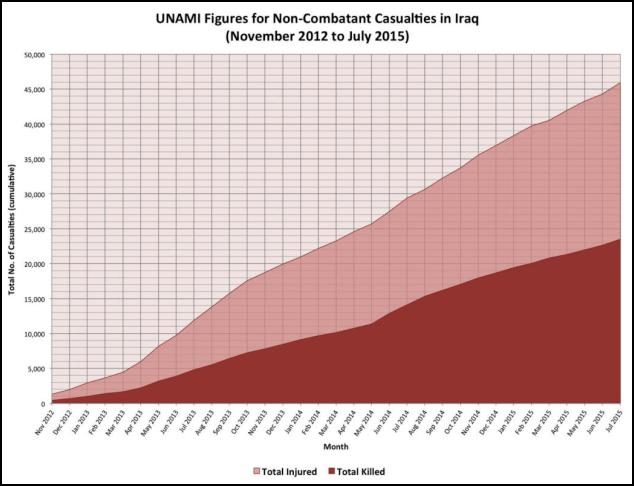
Click for big version22 July 2015 – In a
briefing to the UN Security Council, the Special Representative of the UN Secretary-General for Iraq says, “More than three million people are internally displaced and [UN] partners estimate that a nearly a million more are likely to be displaced by continuing conflict and violence in the months ahead.”
28 July 2015 – CBS News reports that the popular mobilisation forces (PMF) have set up training camps for “students as young as middle-school age to use their summer vacations to prepare to fight [ISIS].” According to the news report, there are “dozens of such camps around the country, [and] hundreds of students have gone through the training”, however “it is impossible to say how many went on to fight [ISIS] since those who do so go independently.” In recent months, the Associated Press has witnessed “over a dozen armed boys on the front line in western Anbar province, including some as young as 10.”
1 August 2015 – The president of Iraq’s Kurdistan region condemns Turkish airstrikes that killed civilians in the village of Zarkel in northern Iraq.




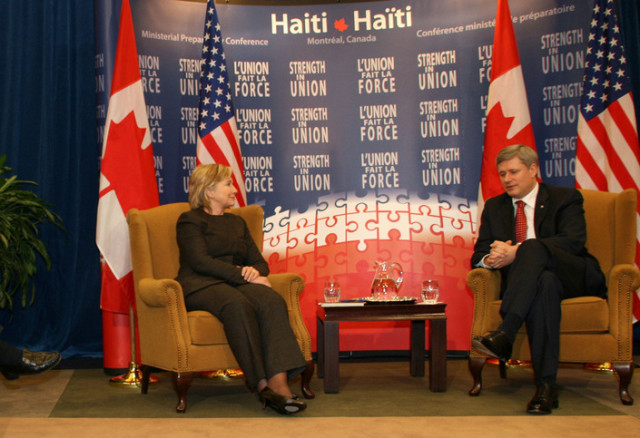

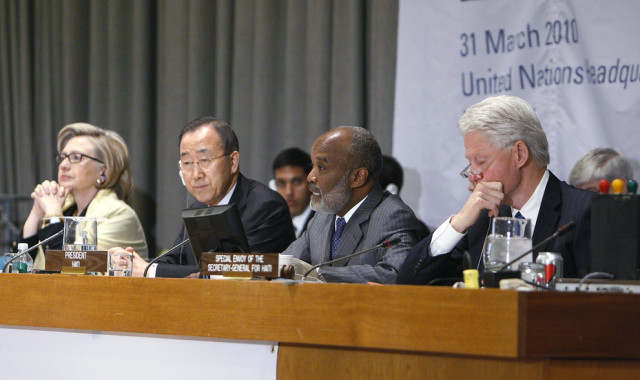
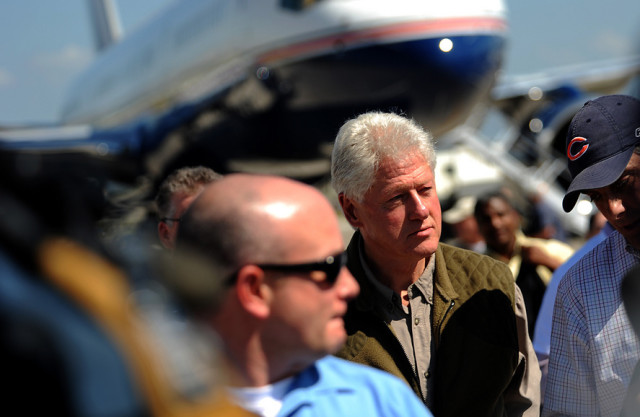

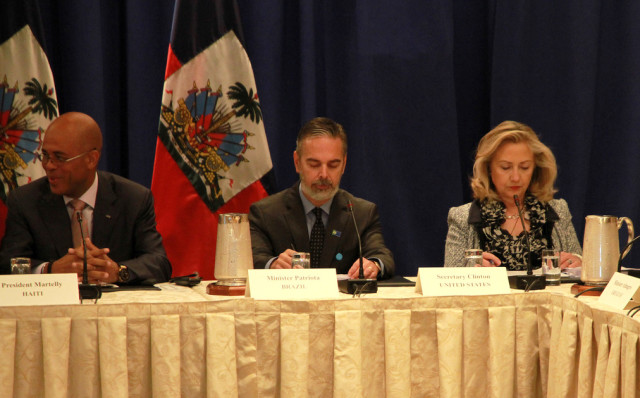





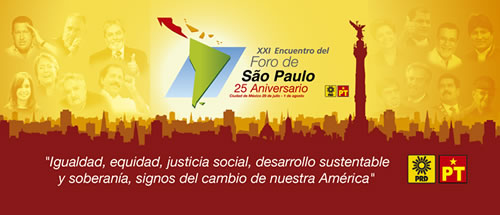




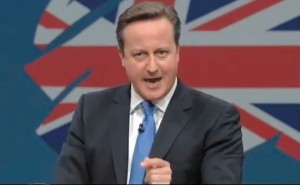
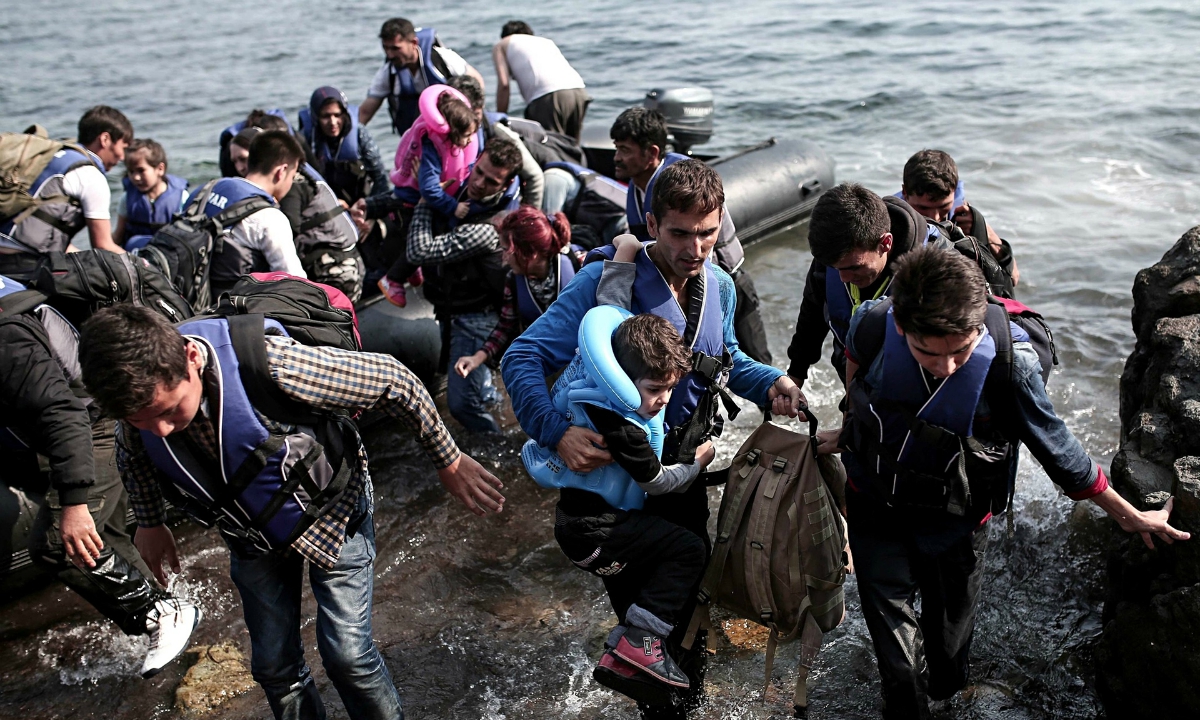
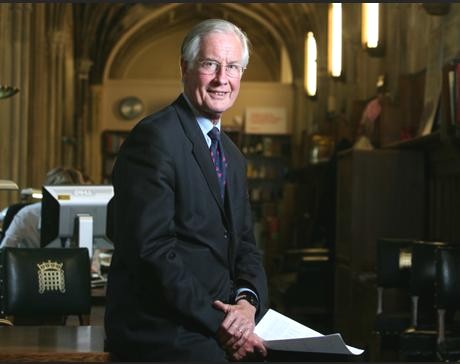

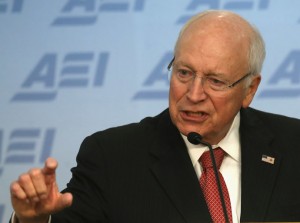
















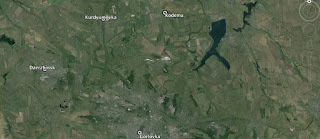









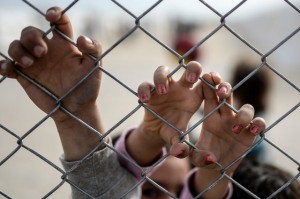




 This cable suggests that the US goal in December 2006 was to undermine the Syrian government by any available means, and that what mattered was whether US action would help destabilize the government, not what other impacts the action might have…In public, the US was opposed to ‘Islamist terrorists’ everywhere; but in private it saw the ‘potential threat to the regime from the increasing presence of transiting Islamist extremists’ as an ‘opportunity’ that the US should take action to try to increase.
This cable suggests that the US goal in December 2006 was to undermine the Syrian government by any available means, and that what mattered was whether US action would help destabilize the government, not what other impacts the action might have…In public, the US was opposed to ‘Islamist terrorists’ everywhere; but in private it saw the ‘potential threat to the regime from the increasing presence of transiting Islamist extremists’ as an ‘opportunity’ that the US should take action to try to increase.







